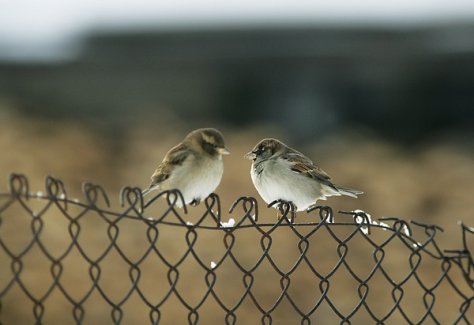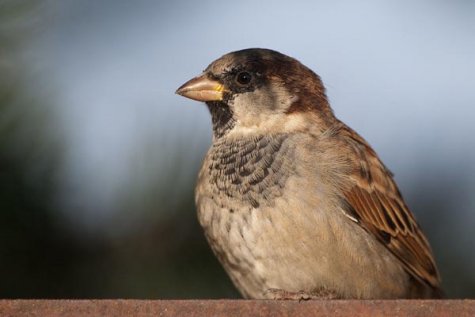Winter bird feeder camera guests – House sparrow
Photos: Arne Ader
Translation: Liis
House sparrow pair
House sparrow
Koduvarblane Passer domesticus
The house sparrow is held to be one of the most numerous bird species in the world. In cities they were really numerous when the roads were still cobblestone paved, goods were brought to the shops by horse and pleasant “baths” could be had in the street dust. And it was not so very long ago – only half a century back. Since that time the number of the „street urchins“ has gone down clearly. The very stationary house sparrows should still be more than a couple of hundred thousand birds in winter. They are some ten grams heavier than the tree sparrows with whom they keep company in winter, and this can be seen directly.
The plumage is brighter for the males, the back is chestnut brown, with yellow and black. The female birds have a duller back plumage: grey, with black and beige. On the brownish wings both have a white band and black lengthwise bands. The underparts are sparrow grey.
The male bird has a black chin patch, lacking in the female birds, the crown and cheeks are grey. The plumage of the female sparrow is rather pale brown, with not very strongly contrasting bands. The eyebrow streak is yellowish, but compare photos or in nature. Some look rather like “soot spooks“ after having spent the night in a chimney and the description of the plumage doest not fit them very well.
The reckless behaviour of the „street urchins“ at the bird feeder fits their name – they arrive in a group, cause confusion among other birds, the food flies everywhere – and they are gone. The sparrows are not early in the morning and like to hop around in the daytime under the birdfeeder picking up food. They can stand up for their rights, being quick, ruthless, noisy, not frightened by bigger birds. Well needed properties for staying alive in a market economy.
House sparrow










